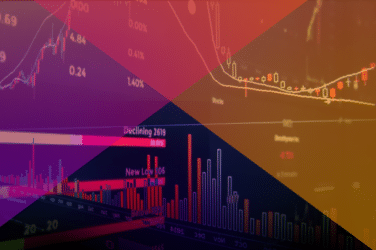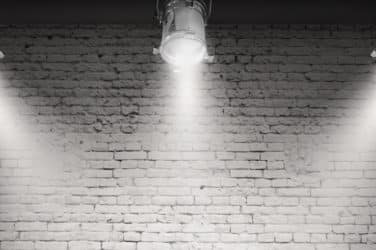Although lit markets may question the efficacy of dark pools, an increasing number of major exchanges are releasing their own dark platforms. Is opening these platforms exacerbating issues of dwindling lit liquidity, or is this a way to mitigate against further damage? BEST EXECUTION explores the current landscape, speaking to key players to understand the current differentiation between light and dark – and where the shades of grey are falling.
The latest dark pool release from a major exchange was Mid-Point Match, launched by Euronext earlier this month. The platform allows users to assess liquidity in dark markets before moving to the lit book in a single trade sequence. This will help to mitigate information leakage, the company says, and will minimise market impact.
There were a number of drivers behind Euronext’s decision to launch their product, Vincent Boquillon, head of cash equities, told BEST EXECUTION. “Dark pools have been around for more than a decade; we came to the understanding that they’re here to stay,” he

explained. That belief was cemented by a June 2023 MiFIR review, which considered the evolution of dark trading and the introduction of single rather than double volume caps.
Deutsche Borse has also announced its return to the dark pool game, with Xetra Midpoint expected to launch in November 2024. The firm’s previous offering was released in 2008 and shuttered in 2017. Again, this was a customer demand-driven initiative; “large member firms asked us to deliver a midpoint service as an integrated solution in the heart of price discovery for German instruments”, said Maximilian Trossbach, project manager for the product.
“I think the market at large understands the benefits, costs and utility of trading on non-displayed, midpoint order books really well,” Simon McQuoid-Mason, head of equity products for the UK and Ireland at SIX Swiss Exchange, told BEST EXECUTION. “They are a key feature of the trading landscape in Europe, and won’t disappear.”
SIX has offered a non-displayed pool since 2016, and has been following regulatory changes in the space closely. McQuoid-Mason is hopeful for a “sensible and appropriate”

approach to regulation in the dark landscape. In SIX’s native Switzerland, volume caps are not stipulated; “and guess what – we haven’t seen proportionate dark volumes spiral out of control”, McQuoid-Mason reported. “This suggests to us that there is a natural level of dark trading influenced by the cost/benefit profile of trading in the dark, shape of flow and nature of the underlying trading objective.”
A matter of time
On top of a continually robust dark trading landscape, Euronext recently migrated its data centre from the UK to Bergamo, in Northern Italy. “A few months later, we started receiving calls from a large number of participants, asking us to deploy a dark pool.” Because of the latency gap between London and Bergamo, they were finding it inefficient to trade on UK-based dark pools.
“Data centres in Europe are even more fragmented than the ones in the US,” Boquillon shared. “It takes a certain amount of time to go from point A to point B—physics is physics. For a message to travel from Bergamo to London, it takes around eight milliseconds. For the human brain that may not seem like much, but in electronic trading it’s a decade.”
This means that prices shown on multilateral trading facilities in the UK are already stale by the time they make it to the pools, costing investors and raising the implicit costs of trading. Through Mid-Point Match, “we’re removing that latency tax for investors”, Boquillon said.
This isn’t the first time that Euronext has provided a dark pool. The company “was one of the founding fathers of smart pools”, Boquillon stated, “and for a number of years was hosting, in a managed structure, the dark pools of Goldman Sachs, HSBC and SocGen”. So, from a technical standpoint, the new offering was not a major challenge.
What did have to adjust, however, was mindset. “We run the biggest lit exchange in Europe, and we’ve been historically very strong advocates of lit markets,” Boquillon said. With the European liquidity crunch, turning to a platform without price discovery may seem counterproductive. The company has adjusted to acknowledge that “lit is not for everything, and dark is not for everything”, Boquillon explained. “The conjunction of the two is a value proposition that market participants are looking for.”
McQuoid-Mason agrees. “The key benefit is not operating dark books in isolation, but rather in combination with other order books,” he stated, a tactic he says many venues are focused on. Employing multiple approaches in tandem, and allowing for client-oriented customisation interactions, allows for a “stitching back together of different types of liquidity that might otherwise miss each other”, he explained.
Aquis launched its dark pool, Aquis Matching Pool (AMP), in March 2022 following a demand for dark functionality and midpoint trading from clients. Despite initially focusing solely on lit markets, the firm is now a significant presence in the dark markets space. In March, AMP took a 8.73% share of dark trading in Europe over March – a record figure for the

exchange. As interest continues, Pasquale Crispi, head of liquidity and trading strategies at the company, told BEST EXECUTION that “In terms of future market structure, we see one of the biggest change factors being further integration of the retail market”.
Cboe offers three dark order books, and currently holds the majority of the market share when it comes to dark trading. “The proximity of Cboe’s infrastructure to that of our clients makes it easier for them to capture liquidity and manage their exposure, so on the whole it’s a source of competitive advantage for us,” Natan Tiefenbrun, president of North American and European equities at Cboe Global Markets, said to BEST EXECUTION. However, now that other exchanges are diving into the deep end in the space, whether the firm will maintain that advantage may be less certain.
The dying of the light?
As dark markets continue to grow in popularity, will lit markets have to adjust their offerings to remain appealing? Boquillon thinks not. Alternative execution mechanisms all import prices from the primary markets, he said, while lit markets remain the standard benchmark. “I believe that lit markets will remain the place of price formation, and will continue to be regarded as where markets are made.”
On the other hand, McQuoid-Mason suggested that “the case for lit liquidity does need to be restated”, adding that “a return of primary listings to the market in general also serves to underscore the benefit of deep, liquid lit order books”. From SIX’s perspective, he shared, “multilateral venues that offer a diversity of different flow types are integral to a healthy trading ecosystem and price certainty”.
With so many options in play, “it’s a complex picture”, Elliot Banks, chief product officer at data firm BMLL, told BEST EXECUTION. “There are a lot of different trading mechanisms

and modes. The important thing is understanding where that liquidity is and how to interact with it,” he continued, urging market participants to take a data-driven approach to their decision-making.
“Continued innovation remains as important as ever,” Crispi summarised. Lit markets need to consider price improvement and lower market impact, and reflect on how firms balance their choices based on the balance of implicit and explicit costs.
With dark trading facilities having a more solid presence in the market than ever, now the focus is on ensuring that liquidity is available and understandable for participants. As interior design fans know, having one big light on is not the best way to illuminate a room. Working out the right degrees of light and shade will take time – but greater optionality will create a more ambient, interesting space for everyone involved.
©Markets Media Europe 2024







